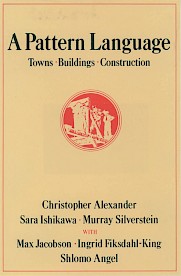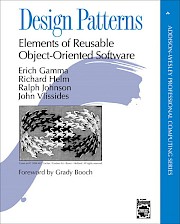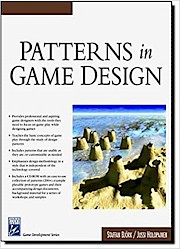Christopher Alexander is dead
On March 17, 2022, Christopher Alexander died at the age of 85.
Christopher Alexander was an architect and basically spent almost his entire life looking for answers to the question of what makes good architecture and how we humans can design good systems. His most influential concept, even far beyond architecture, is certainly the pattern language. In 1977, together with other authors, he published the book called A Pattern Language.
Original pattern approach in architecture

A pattern is defined here as a proven solution to a recurring problem. In the book, he has collected over 250 patterns for architectural design and described them in a generally understandable way. For example, the pattern "Light On Two Sides," which says nothing other than that people generally feel more comfortable in rooms where light from windows enters from two different sides. It follows that when designing floor plans, one should make sure to cut rooms according to this pattern. Each of these patterns connects with other patterns to form a dense network in which one pattern solves problems that may arise from the implementation of other patterns downstream. The resulting pattern language offers architects guidance in designing their complex systems - from regional to urban planning to neighborhoods, streets, houses, all the way down to the design of the window sill.
Computer science discovers the pattern approach

In the 1990s, the computer science community, especially software systems architects, discovered the concept of design patterns. The so-called "Gang of Four" consisting of Erich Gamma, Richard Helm, Ralph Johnson and John Vlissides transferred the design pattern approach to software architecture by collecting proven solution patterns for recurring standard problems in software design and describing them in their object-oriented structure.
Up to now many further disciplines took over this design approach coined originally by Christopher Alexander and developed own Pattern language in their domain. Didactics is one of them. A good overview is given by Helmut Leitner in his German book Mustertheorie. Meanwhile there have been own pattern conferences for a long time, where these patterns and their pattern language are presented and discussed (e.g. the PLoP conference).
Pattern languages for game design elements

For our project EMPAMOS, the pattern-based description approach of game design elements is especially interesting because the development of games or gamification solutions is always about solving tricky design problems. Suitable game design elements must be selected and suitably combined to form a motivating overall system. And here it is not uncommon that one game design element solves one problem, but at the same time another problem follows on its heels. The pioneers of the pattern-based description of game design elements were the colleagues Björk and Holopainen, who reduced game designs to patterns for the first time in their 2005 book Patterns In Game Design.
Criticism of pattern languages
However, despite their widespread use, pattern languages have never been uncontroversial and are still criticized today for various reasons. A paper published in 2017 summarizes the main criticisms of the last decades very comprehensively, but nevertheless vividly. One of them concerns the empirical evidence base on which the patterns are based and the methods of how the patterns were obtained. The authors of the paper, Michael J. Davis and Michael J. Ostwald, summarize it as "Alexander's supporting evidence has been criticized for being superficial, pseudo-scientific and little more than personal preference."
In the meantime, methods for data-driven extraction of patterns (eng. pattern mining) have been presented and pattern descriptions are also systematically reviewed in the context of scientific conferences (e.g. with the Shepherding approach). Nevertheless, most of the documented pattern languages to date cite anectodal evidence at best, which leads to the fact that the actual meaning of patterns in practice remains unclear.
EMPAMOS: an evidence-driven pattern language
Here, we are taking a fundamentally different approach with the EMPAMOS project by developing our pattern language based on extensive and broad empirical analysis. We summarized our data-driven approach to pattern mining in this paper in 2020. As of today, we have used it to describe about 100 game design elements as patterns, for which we have collected about 50,000 empirical evidences in the games of the German Game Archive since 2016. In this way, for each of our patterns, we know how often it has already been used in games in the past and what significance it actually has in practice. Today, the challenges of pattern mining lie less in the evidence base for the patterns themselves than for the combinations and relationships between the patterns. This is what Alex Schneider in particular is researching in our team, and he has summarized his approach in a separate blog article for SPIEL in Essen 2021.
